Best Way To Remove a Beehive From a Structure
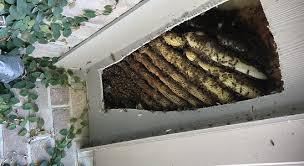
Beehive In The Wall
The best way to remove a hive within walls is by opening up the exterior wall. Going through the drywall poses risks to the inside of the home and may result in bees entering. Beehive removal is messy, with technicians in bee suits potentially tracking dirt inside. Even with prior elimination, some bees may be present during removal. To control dirt, honey, and bees inside, thorough use of plastic liners is necessary. Repairing the drywall often entails paint matching and texturing.

Beehive In The Roof
The safest and most effective way to remove a hive from a roof is by opening the exterior. While some homeowners prefer removing the hive by crawling inside the attic, it poses several risks. The attic crawl space can have unstable footing, increasing the danger of falls and potential damage to electrical wires and water pipes. Attics are also hot, which combined with wearing a bee suit, can lead to heat stroke. In addition, the angle of the rooftop may make it inaccessible to reach certain hives. Therefore, it is best to have a skilled technician open the roof for hive removal.
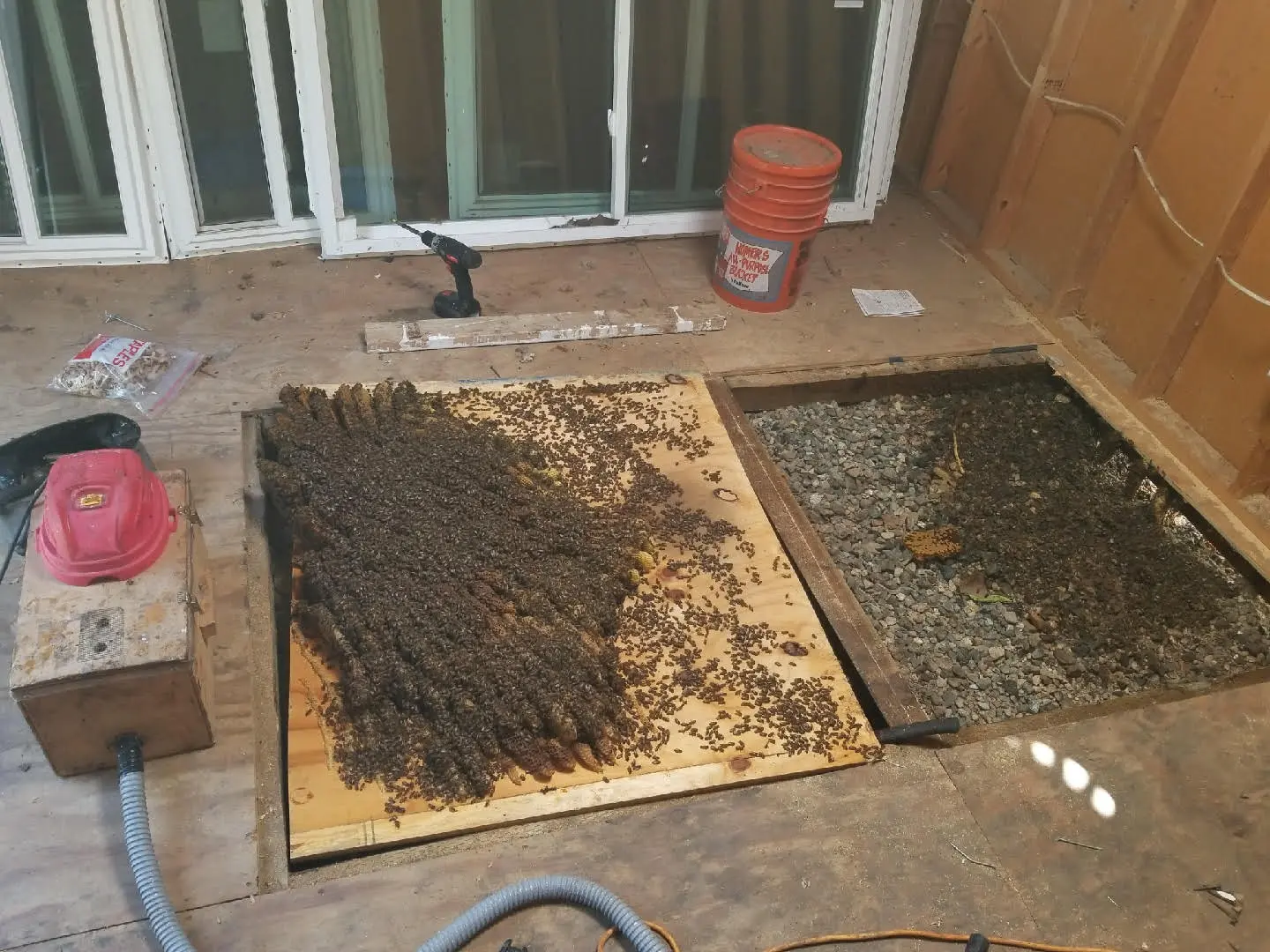
Beehive Under The Floor
When a hive is found under a floor or porch, it is often in the crawl space below the house or deck. Homeowners may request hive removal from the crawl space, but it is not the most effective method. The optimal way is to remove the hive from above. This is because there is restricted movement below, making it challenging for a technician in a bee suit to crawl and remove the hive. There are also difficulties in preventing honey from dripping onto the technician. To minimize damage, it is important to position oneself above the hive for better control during removal.
HOW DO I KNOW IF I HAVE TO OPEN MY WALL OR ROOF?
HOW LONG DOES IT TAKE FOR THE BEES TO MAKE A BEEHIVE?
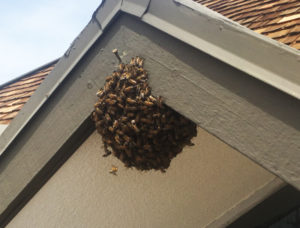
Bee Swarm – No Honeycomb
The decision to open up a wall or roof to remove a beehive depends on how long the bees have been there. If it's been less than a week or two, it's usually advised not to open the structure. This is because the hive wouldn't be fully established yet, making it more cost-effective to eliminate the bees before they have a chance to build a hive. This method doesn't require opening the structure and saves money. However, when bees get inside a wall or roof, smoking or luring them out rarely works and can worsen the situation.
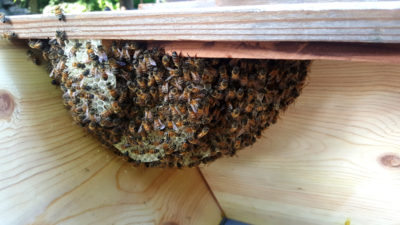
Bee Swarm After 2-3 Weeks
If a honeycomb hive has been present for 2-3 weeks, determining whether it's necessary to open the structure becomes uncertain. Our technicians assess the situation and decide whether or not to open the wall or roof based on their observations. If unsure, they advise homeowners against paying for structure opening. Instead, they recommend starting with elimination to see if it resolves the issue. If the bees continue to return in the same location, opening the structure becomes advisable.
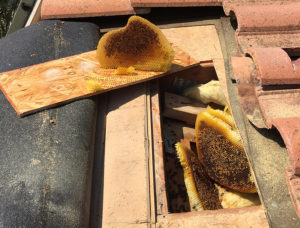
Bee Swarm After A Month or longer
If bees have been present for over four weeks, it is advisable to remove the hive to prevent future infestations. Reputable removal companies will never suggest opening a structure without a hive, but some dishonest companies may do so for financial gain or because they are unlicensed. To protect yourself, ask for photos of the hive before and after removal. This not only prevents unnecessary structure openings but also serves as proof of a complete hive cleanout.
We Repair Your Roof, Wall or Ceiling From Bee Swarm Damage
We employ methods to extract hives with minimal structural damage, prioritizing the safety of the nesting bees. Our live honeybee removal process involves careful manual handling or, at times, using a vacuum. The bees are relocated to our local hives to continue their honey production. However, not all hives survive the transplantation process, particularly those previously exposed to sprays.
We back every job with our guarantee. We meticulously identify the bees’ entry points and handle your property with the utmost care, aiming to minimize any damage to the roofline, walls, or siding.
Our success rate in Los Angeles, San Bernardino, and Orange County speaks for itself, and we offer the most competitive rates in the area. Contact us for the best possible service and rates.
